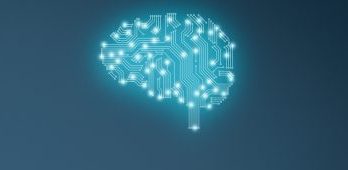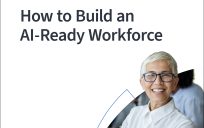Across the board, government agencies are looking to implement tools that can increase productivity in any way possible. Artificial Intelligence (AI) has found its way to the top of the list, with many agencies looking to incorporate it to improve the work that their staff is able to do.
“Artificial intelligence and machine learning are probably the two hottest buzzwords going around right now,” Randall Knol, IT Specialist, Census Bureau, said during GovLoop’s recent online training. “It isn’t magic. There’s a lot of unrealized promise with it.”
Human resources (HR) is one area that government has begun to realize the potential for AI in terms of increasing productivity.
“HR is a good target for AI and machine learning because it has fairly high human capital cost,” Knol said. “AI for HR management is the tool of the future. Organizations that aren’t using AI risk falling behind.”
To explain how AI can be used, Steve Beard, People Manager, Infor Public Sector HCM/ERP and Wilfred Justin, Principal Account Manager, Amazon Web Services Worldwide Public Sector, spoke to its potential for increasing productivity and extending the abilities of HR employees, particularly when it comes to hiring.
“AI can help automate what has traditionally been manual processes in the human resources realm,” Beard said. “Back in the late 80’s and early 90’s, everything was done on paper. Relying on manual interviews and subjective assessments, hiring the right candidate was really reduced to guesswork and crossed fingers.”
By guesswork, Beard is referring to the hiring process in which HR employees relied primarily on interviews that didn’t necessarily cover everything that a company might want to know about a candidate. To combat this, AI introduces the potential for talent science.
“Talent science uses patented algorithms to analyze job- and performance-related data,” said Beard. “Identifying future talent with talent science takes the guesswork out of recruitment. It’s an AI-driven predictive analytics application that uses data and science to help organizations determine the best talent available for a given role.”
Essentially, AI allows agencies to find people that fit their needs as directly as possible using a performance profile that identifies behavioral, cognitive and cultural qualities of applicants and provides data on their performance potential.
“It empowers our customers to select the right people for the right job,” said Beard. Justin agreed, citing the success of the AWS technology infrastructure platform in this field.
Despite the positive potential for AI, many employees are concerned about what the future holds with its incorporation into their workplaces.
“Just saying something like machine learning or AI to someone, you have no idea what their perception of that is,” Knol said. “You’re not looking to put them out of work. You’re looking for a technology that’s going to extend the expertise they already have.”
Overall, AI is a huge opportunity for government agencies to make their work more efficient and effective.
“There are opportunities to make HR processes more efficient, to reduce costs and to automate or streamline work,” Beard said. “At the end of the day, that improves HR delivery of services to your constituents and makes you more effective. AI and machine learning is just another way of saying you can automate a lot of the practices that you’re currently doing manually.”







Very interesting! This is the first I’m hearing about talent science. It will be interesting to see how government HR departments adapt to these technological changes.